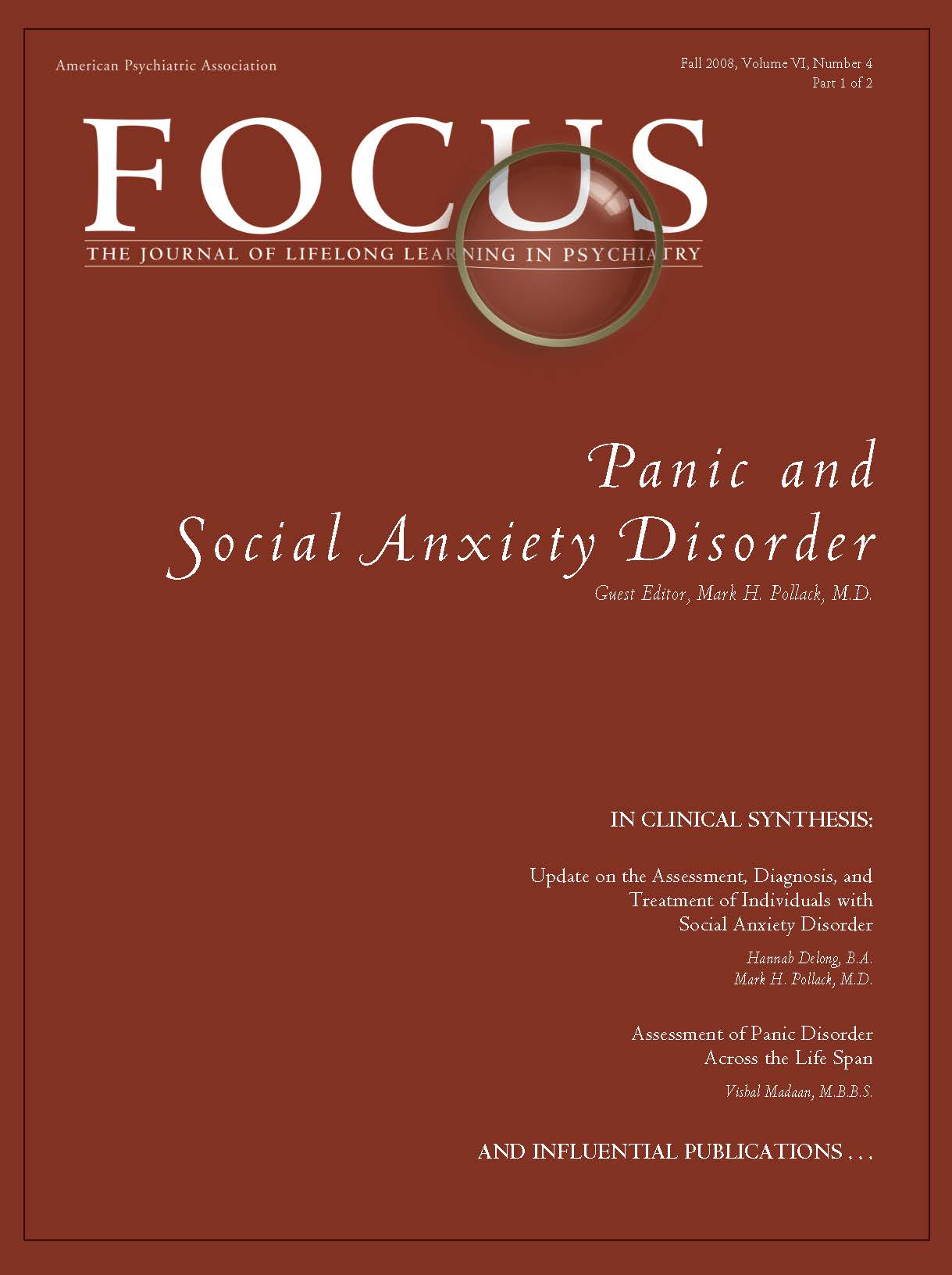From the Guest Editor
Anxiety disorders are among the most common mental health problems in the United States, affecting 18% of adults in a given year (1) and almost 30% at some point during their lifetime (2). They are associated with a wide range of distressing psychological and somatic symptomatology, as well as disability across broad domains of work, social and family function. Individuals with anxiety disorders are overrepresented among high users of medical services and elevated levels of anxiety are associated with premature mortality due to cardiovascular causes and suicide. One systematic study reported that anxiety disorders cost the United States more than $42 billion per year, amounting to almost one-third of the total direct and indirect mental health costs in this country (3).
This issue of Focus concentrates on two prototypic anxiety disorders, social anxiety disorder (also known as social phobia) and panic disorder. Both of these conditions have been the focus of extensive study over the last few decades that has made important contributions to our understanding of the neurobiological and psychological factors that underlie these conditions. Further, we now have a number of effective pharmacological and psychosocial interventions with which to treat individuals affected by these conditions, although there remains a significant unmet need for more effective, well-tolerated, and readily administered interventions that can move more patients from symptomatic to remitted status. It is hoped that the articles in this issue of Focus, including up-to-date reviews of the phenomenology and treatment of social anxiety disorder and the manifestations of panic across the life cycle, as well as discussions of panic disorder treatment, will provide readers with a sense of the strides that have been made in our understanding of these conditions as well as the significant, clinically relevant issues that will require additional work and study to address.
1 Kessler RC, Chiu WT, Demler O, Merikangas KR, Walters EE: Prevalence, severity, and comorbidity of 12-month DSM-IV disorders in the National Comorbidity Survey Replication. Arch Gen Psychiatry 2005; 62: 617– 627Crossref, Google Scholar
2 Kessler RC, Berglund P, Demler O, Jin R, Merikangas KR, Walters EE: Lifetime prevalence and age-of-onset distributions of DSM-IV disorders in the National Comorbidity Survey Replication. Arch Gen Psychiatry 2005; 62: 593– 602Crossref, Google Scholar
3 Greenberg PE, Sisitsky T, Kessler RC, Finkelstein SN, Berndt ER, Davidson JR, Ballenger JC, Fyer AJ: The economic burden of anxiety disorders in the 1990s. J Clin Psychiatry 1999; 60: 427– 435Crossref, Google Scholar



